GHRP-2 10mg
GHRP-2 10mg
GHRP-2 increases growth hormone production, promotes muscle growth and fat loss, accelerates recovery and healing, enhances metabolism, provides cardioprotective effects, and strengthens the immune system. (PMID: 15699539, PMID: 28400207, PMID: 15507538)
GHRP-2 Research Topics:
-
Increased Growth Hormone Production:
GHRP-2 stimulates the pituitary gland to produce more growth hormone, which supports overall growth and regeneration processes in the body. (PMID: 15699539)
-
Muscle Growth and Fat Loss:
By increasing growth hormone levels, GHRP-2 helps promote muscle growth, enhance muscle tone, and reduce body fat. This dual effect is particularly beneficial for athletes and bodybuilders. (PMID: 28400207)
-
Immune System Support:
It strengthens the immune system, enhancing the body’s ability to fight diseases and infections. (PMID: 15507538)
Peer-Reviewed Studies
Zeng, P., Li, S., Zheng, Y. H., Liu, F. Y., Wang, J. L., Zhang, D. L., & Wei, J. (2014). Peptides, 55, 103–109.
Phung, L. T., Inoue, H., Nou, V., Lee, H. G., Vega, R. A., Matsunaga, N., Hidaka, S., Kuwayama, H., & Hidari, H. (2000). Domestic animal endocrinology, 18(3), 279–291.
Structure

Sequence: D-Ala-D-2Nal-Ala-Trp-D-Phe-Lys Molecular Formula: C4sHssN90s
Molecular Weight: 817 .97 49 g/mol
PubChem CID: 6918245
CAS Number: 158861-67-7
Code Names: KP-102, GPA-748, WAY-GPA-748
GHRP-2 Effect
1. Protects and Enhances Muscle Structure
Research in Yaks indicates that GHRP-2 can boost muscle growth in two ways: increased protein deposition and decreased protein degradation. The research showed that GHRP-2 can overcome natural growth plateaus that occur in yaks due to food deprivation, disease, and adverse environmental conditions (e.g. cold)[1]. The most profound finding from this study is that GHRP-2 reduces muscle atrophy by inactivating atrogin-1 and MuRF1, proteins that control the muscle degradation pathway [2]. There is hope that these findings could be used to reduce the catabolism common in chronic illnesses like autoimmune disease, cancer, and more.
Of course, by activating growth hormone and insulin-like growth factor-1, GHRP-2 helps to boost muscle protein deposition. The combined effect of reducing degradation and enhancing deposition is that GHRP-2 encourages the development of lean body mass even in adverse conditions [3].
2. Stimulates Appetite
GHRP-2 has been shown to boost food intake [4],[5]. Though this may not seem acutely important, appetite stimulation in the setting of chronic disease is an important part of overall health care. The Ability to easily and reliably stimulate appetite could help doctors treat chronically ill patients and improve long-term outcomes.
3. May Protect the Heart
Research in fetal heart cell culture lines shows that GHRP-2 and its analogues (GHRP-1 and GHRP-6) can help to protect heart cells by reducing apoptosis or programmed cell death [6]. This is of particular importance following a heart attack when heart cells are particularly prone to apoptosis thanks to decreased blood and thus nutrient supply. Research using an analogue of GHRP-2 called Hexarelin has indicated that there may be a specific receptor for these peptides [7]. Identifying new receptors in any tissue opens pathways for new drug development, but also deepens our understanding of human physiology and how to prevent dysfunction in the first place.
4. Improves the Immune System
GHRP-2 has been shown to stimulate the thymus, an organ responsible for protecting certain cells of the immune system. In particular, the thymus helps T cells to mature. T cells are critical for adaptive immunity and our ability to fight off complex infections. The function of the thymus declines with age, which leads to a number of age-related dysfunctions ranging from inadequate tissue repair to lost immunity and thus an inability to fight off infections, guard against cancer, and maintain normal tissue function. GHRP-2 has been shown to rejuvenate the thymus, boosting the number and diversity of T-cells it produces [8]. This leads to improved immunity.
5. Improves Sleep Quality
GHRP-2 has been shown to increase the duration of stages 3 and 4 of the sleep cycles by about 50% each while increasing REM sleep by approximately 20% while reducing the amount that an individual deviates from “normal sleep” by as much as a third. Overall, the improvement in sleep led to improvement in cognitive function, blood pressure, healing, and energy levels [9]. These findings, while useful to all adults, are particularly important in the elderly, where the effects of aging take a toll on sleep quality. GHRP-2 may be useful in understanding how to fine-tune sleep to improve quality and maybe even help people get all the benefits of a full night’s sleep in a fraction of the time.
6. May Affect Pain Perception
It was originally thought that observations of decreased pain in animal models of osteoarthritis were the result of GHRP-2 boosting growth hormone levels and accelerating healing in the damaged tissues. Keen scientists observed, however, that pain relief preceded healing by a substantial margin, suggesting that GHRP-2 may have direct effects on pain perception. As it turns out, GHRP-2 has action at the opioid receptors [10].
There are four known opioid receptors. Most opioid pain medications do not discriminate between them. This is problematic because while some of the receptors mediate pain, others affect things like wakefulness and breathing while still others impact addiction. GHRP-2 is a selective opioid receptor agonist, binding primarily to the receptors responsible for pain relief, sedation, and addiction. This finding indicates that it may be possible to produce selective opioid agonists and therefore mitigate or prevent entirely undesirable effects like respiratory depression and addiction.
GHRP-2 exhibits minimal to moderate side effects, and low oral and excellent subcutaneous bioavailability in mice. Per kg, dosage in mice does not scale to humans. GHRP-2 for sale at Life Link Research is limited to educational and scientific research only, not for human consumption. Only buy GHRP-2 if you are a licensed researcher.
Article Author
The above literature was researched, edited, and organized by Dr. Logan, M.D. Dr. Logan holds a doctorate from Case Western Reserve University School of Medicine and a B.S. in molecular biology.
Scientific Journal Author
Jean-Alain Fehrentz was born in Nancy, France, in 1955. He received his Ph.D. degree in Chemistry from the University of Nancy in 1983 and joined the Centre CNRS-INSERM de Pharmacologie Endocrinologie of Montpellier in the research group of Professor B. Castro. From 1989 to 1992 he was appointed as a researcher at Sanofi Research in Montpellier. Then he moved to the Faculty of Pharmacy of Montpellier, working under the direction of Professor J. Martinez. His research interests focus on peptide aldehydes, enzyme inhibitors, peptidomimetics, growth hormone interactions, and heterocycle-based receptor ligands. He has published more than 150 scientific papers.
Jean-Alain Fehrentz is referenced as one of the leading scientists involved in the research and development of GHRP-2. In no way is this doctor/scientist endorsing or advocating the purchase, sale, or use of this product for any reason. There is no affiliation or relationship, implied or otherwise, between Life Link Research and this doctor. The purpose of citing the doctor is to acknowledge, recognize, and credit the exhaustive research and development efforts conducted by the scientists studying this peptide. Jean-Alain Fehrentz is listed in [11] under the referenced citations.
Referenced Citations
- R. Hu et al., “Effects of GHRP-2 and Cysteamine Administration on Growth Performance, Somatotropic Axis Hormone and Muscle Protein Deposition in Yaks (Bos grunniens) with Growth Retardation,” PloS One, vol. 11, no. 2, p. e0149461, 2016.
- D. Yamamoto et al., “GHRP-2, a GHS-R agonist, directly acts on myocytes to attenuate the dexamethasone-induced expressions of muscle-specific ubiquitin ligases, Atrogin-1 andMuRF1,” Life Sci., vol. 82, no. 9–10, pp. 460–466, Feb. 2008.
- L. T. Phung et al., “The effects of growth hormone-releasing peptide-2 (GHRP-2) on the release of growth hormone and growth performance in swine,” Domest. Anim. Endocrinol., vol.18, no. 3, pp. 279–291, Apr. 2000.
- B. Laferrère, C. Abraham, C. D. Russell, and C. Y. Bowers, “Growth hormone releasing peptide-2 (GHRP-2), like ghrelin, increases food intake in healthy men,” J. Clin. Endocrinol. Metab., vol. 90, no. 2, pp. 611–614, Feb. 2005.
- B. Laferrère, A. B. Hart, and C. Y. Bowers, “Obese subjects respond to the stimulatory effect of the ghrelin agonist growth hormone-releasing peptide-2 on food intake,” Obes. Silver Spring Md, vol. 14, no. 6, pp. 1056–1063, Jun. 2006.
- G. Muccioli et al., “Growth hormone-releasing peptides and the cardiovascular system,” Ann. Endocrinol., vol. 61, no. 1, pp. 27–31, Feb. 2000.
- V. Bodart et al., “Identification and characterization of a new growth hormone-releasing peptide receptor in the heart,” Circ. Res., vol. 85, no. 9, pp. 796–802, Oct. 1999.
- D. D. Taub, W. J. Murphy, and D. L. Longo, “Rejuvenation of the aging thymus: growth hormone-mediated and ghrelin-mediated signaling pathways,” Curr. Opin. Pharmacol., vol. 10,no. 4, pp. 408–424, Aug. 2010.
- G. Copinschi et al., “Prolonged oral treatment with MK-677, a novel growth hormone secretagogue, improves sleep quality in man,” Neuroendocrinology, vol. 66, no. 4, pp. 278–286, Oct. 1997.
- P. Zeng et al., “Ghrelin receptor agonist, GHRP-2, produces antinociceptive effects at the supraspinal level via the opioid receptor in mice,” Peptides, vol. 55, pp. 103–109, May 2014.
- Moulin, A. , Ryan, J. , Martinez, J. and Fehrentz, J. (2007), Recent Developments in Ghrelin Receptor Ligands. ChemMedChem, 2: 1242-1259.
$19.99
Description
GHRP-2 increases growth hormone production, promotes muscle growth and fat loss, accelerates recovery and healing, enhances metabolism, provides cardioprotective effects, and strengthens the immune system. (PMID: 15699539, PMID: 28400207, PMID: 15507538)
GHRP-2 Research Topics:
-
Increased Growth Hormone Production:
GHRP-2 stimulates the pituitary gland to produce more growth hormone, which supports overall growth and regeneration processes in the body. (PMID: 15699539)
-
Muscle Growth and Fat Loss:
By increasing growth hormone levels, GHRP-2 helps promote muscle growth, enhance muscle tone, and reduce body fat. This dual effect is particularly beneficial for athletes and bodybuilders. (PMID: 28400207)
-
Immune System Support:
It strengthens the immune system, enhancing the body’s ability to fight diseases and infections. (PMID: 15507538)
Peer-Reviewed Studies
Zeng, P., Li, S., Zheng, Y. H., Liu, F. Y., Wang, J. L., Zhang, D. L., & Wei, J. (2014). Peptides, 55, 103–109.
Phung, L. T., Inoue, H., Nou, V., Lee, H. G., Vega, R. A., Matsunaga, N., Hidaka, S., Kuwayama, H., & Hidari, H. (2000). Domestic animal endocrinology, 18(3), 279–291.
Structure

Sequence: D-Ala-D-2Nal-Ala-Trp-D-Phe-Lys Molecular Formula: C4sHssN90s
Molecular Weight: 817 .97 49 g/mol
PubChem CID: 6918245
CAS Number: 158861-67-7
Code Names: KP-102, GPA-748, WAY-GPA-748
GHRP-2 Effect
1. Protects and Enhances Muscle Structure
Research in Yaks indicates that GHRP-2 can boost muscle growth in two ways: increased protein deposition and decreased protein degradation. The research showed that GHRP-2 can overcome natural growth plateaus that occur in yaks due to food deprivation, disease, and adverse environmental conditions (e.g. cold)[1]. The most profound finding from this study is that GHRP-2 reduces muscle atrophy by inactivating atrogin-1 and MuRF1, proteins that control the muscle degradation pathway [2]. There is hope that these findings could be used to reduce the catabolism common in chronic illnesses like autoimmune disease, cancer, and more.
Of course, by activating growth hormone and insulin-like growth factor-1, GHRP-2 helps to boost muscle protein deposition. The combined effect of reducing degradation and enhancing deposition is that GHRP-2 encourages the development of lean body mass even in adverse conditions [3].
2. Stimulates Appetite
GHRP-2 has been shown to boost food intake [4],[5]. Though this may not seem acutely important, appetite stimulation in the setting of chronic disease is an important part of overall health care. The Ability to easily and reliably stimulate appetite could help doctors treat chronically ill patients and improve long-term outcomes.
3. May Protect the Heart
Research in fetal heart cell culture lines shows that GHRP-2 and its analogues (GHRP-1 and GHRP-6) can help to protect heart cells by reducing apoptosis or programmed cell death [6]. This is of particular importance following a heart attack when heart cells are particularly prone to apoptosis thanks to decreased blood and thus nutrient supply. Research using an analogue of GHRP-2 called Hexarelin has indicated that there may be a specific receptor for these peptides [7]. Identifying new receptors in any tissue opens pathways for new drug development, but also deepens our understanding of human physiology and how to prevent dysfunction in the first place.
4. Improves the Immune System
GHRP-2 has been shown to stimulate the thymus, an organ responsible for protecting certain cells of the immune system. In particular, the thymus helps T cells to mature. T cells are critical for adaptive immunity and our ability to fight off complex infections. The function of the thymus declines with age, which leads to a number of age-related dysfunctions ranging from inadequate tissue repair to lost immunity and thus an inability to fight off infections, guard against cancer, and maintain normal tissue function. GHRP-2 has been shown to rejuvenate the thymus, boosting the number and diversity of T-cells it produces [8]. This leads to improved immunity.
5. Improves Sleep Quality
GHRP-2 has been shown to increase the duration of stages 3 and 4 of the sleep cycles by about 50% each while increasing REM sleep by approximately 20% while reducing the amount that an individual deviates from “normal sleep” by as much as a third. Overall, the improvement in sleep led to improvement in cognitive function, blood pressure, healing, and energy levels [9]. These findings, while useful to all adults, are particularly important in the elderly, where the effects of aging take a toll on sleep quality. GHRP-2 may be useful in understanding how to fine-tune sleep to improve quality and maybe even help people get all the benefits of a full night’s sleep in a fraction of the time.
6. May Affect Pain Perception
It was originally thought that observations of decreased pain in animal models of osteoarthritis were the result of GHRP-2 boosting growth hormone levels and accelerating healing in the damaged tissues. Keen scientists observed, however, that pain relief preceded healing by a substantial margin, suggesting that GHRP-2 may have direct effects on pain perception. As it turns out, GHRP-2 has action at the opioid receptors [10].
There are four known opioid receptors. Most opioid pain medications do not discriminate between them. This is problematic because while some of the receptors mediate pain, others affect things like wakefulness and breathing while still others impact addiction. GHRP-2 is a selective opioid receptor agonist, binding primarily to the receptors responsible for pain relief, sedation, and addiction. This finding indicates that it may be possible to produce selective opioid agonists and therefore mitigate or prevent entirely undesirable effects like respiratory depression and addiction.
GHRP-2 exhibits minimal to moderate side effects, and low oral and excellent subcutaneous bioavailability in mice. Per kg, dosage in mice does not scale to humans. GHRP-2 for sale at Life Link Research is limited to educational and scientific research only, not for human consumption. Only buy GHRP-2 if you are a licensed researcher.
Article Author
The above literature was researched, edited, and organized by Dr. Logan, M.D. Dr. Logan holds a doctorate from Case Western Reserve University School of Medicine and a B.S. in molecular biology.
Scientific Journal Author
Jean-Alain Fehrentz was born in Nancy, France, in 1955. He received his Ph.D. degree in Chemistry from the University of Nancy in 1983 and joined the Centre CNRS-INSERM de Pharmacologie Endocrinologie of Montpellier in the research group of Professor B. Castro. From 1989 to 1992 he was appointed as a researcher at Sanofi Research in Montpellier. Then he moved to the Faculty of Pharmacy of Montpellier, working under the direction of Professor J. Martinez. His research interests focus on peptide aldehydes, enzyme inhibitors, peptidomimetics, growth hormone interactions, and heterocycle-based receptor ligands. He has published more than 150 scientific papers.
Jean-Alain Fehrentz is referenced as one of the leading scientists involved in the research and development of GHRP-2. In no way is this doctor/scientist endorsing or advocating the purchase, sale, or use of this product for any reason. There is no affiliation or relationship, implied or otherwise, between Life Link Research and this doctor. The purpose of citing the doctor is to acknowledge, recognize, and credit the exhaustive research and development efforts conducted by the scientists studying this peptide. Jean-Alain Fehrentz is listed in [11] under the referenced citations.
Referenced Citations
- R. Hu et al., “Effects of GHRP-2 and Cysteamine Administration on Growth Performance, Somatotropic Axis Hormone and Muscle Protein Deposition in Yaks (Bos grunniens) with Growth Retardation,” PloS One, vol. 11, no. 2, p. e0149461, 2016.
- D. Yamamoto et al., “GHRP-2, a GHS-R agonist, directly acts on myocytes to attenuate the dexamethasone-induced expressions of muscle-specific ubiquitin ligases, Atrogin-1 andMuRF1,” Life Sci., vol. 82, no. 9–10, pp. 460–466, Feb. 2008.
- L. T. Phung et al., “The effects of growth hormone-releasing peptide-2 (GHRP-2) on the release of growth hormone and growth performance in swine,” Domest. Anim. Endocrinol., vol.18, no. 3, pp. 279–291, Apr. 2000.
- B. Laferrère, C. Abraham, C. D. Russell, and C. Y. Bowers, “Growth hormone releasing peptide-2 (GHRP-2), like ghrelin, increases food intake in healthy men,” J. Clin. Endocrinol. Metab., vol. 90, no. 2, pp. 611–614, Feb. 2005.
- B. Laferrère, A. B. Hart, and C. Y. Bowers, “Obese subjects respond to the stimulatory effect of the ghrelin agonist growth hormone-releasing peptide-2 on food intake,” Obes. Silver Spring Md, vol. 14, no. 6, pp. 1056–1063, Jun. 2006.
- G. Muccioli et al., “Growth hormone-releasing peptides and the cardiovascular system,” Ann. Endocrinol., vol. 61, no. 1, pp. 27–31, Feb. 2000.
- V. Bodart et al., “Identification and characterization of a new growth hormone-releasing peptide receptor in the heart,” Circ. Res., vol. 85, no. 9, pp. 796–802, Oct. 1999.
- D. D. Taub, W. J. Murphy, and D. L. Longo, “Rejuvenation of the aging thymus: growth hormone-mediated and ghrelin-mediated signaling pathways,” Curr. Opin. Pharmacol., vol. 10,no. 4, pp. 408–424, Aug. 2010.
- G. Copinschi et al., “Prolonged oral treatment with MK-677, a novel growth hormone secretagogue, improves sleep quality in man,” Neuroendocrinology, vol. 66, no. 4, pp. 278–286, Oct. 1997.
- P. Zeng et al., “Ghrelin receptor agonist, GHRP-2, produces antinociceptive effects at the supraspinal level via the opioid receptor in mice,” Peptides, vol. 55, pp. 103–109, May 2014.
- Moulin, A. , Ryan, J. , Martinez, J. and Fehrentz, J. (2007), Recent Developments in Ghrelin Receptor Ligands. ChemMedChem, 2: 1242-1259.


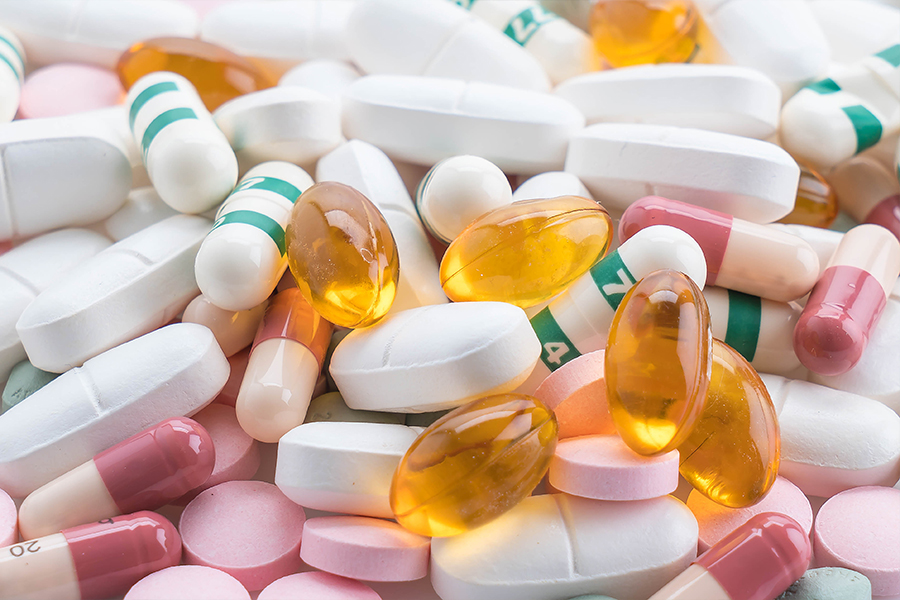

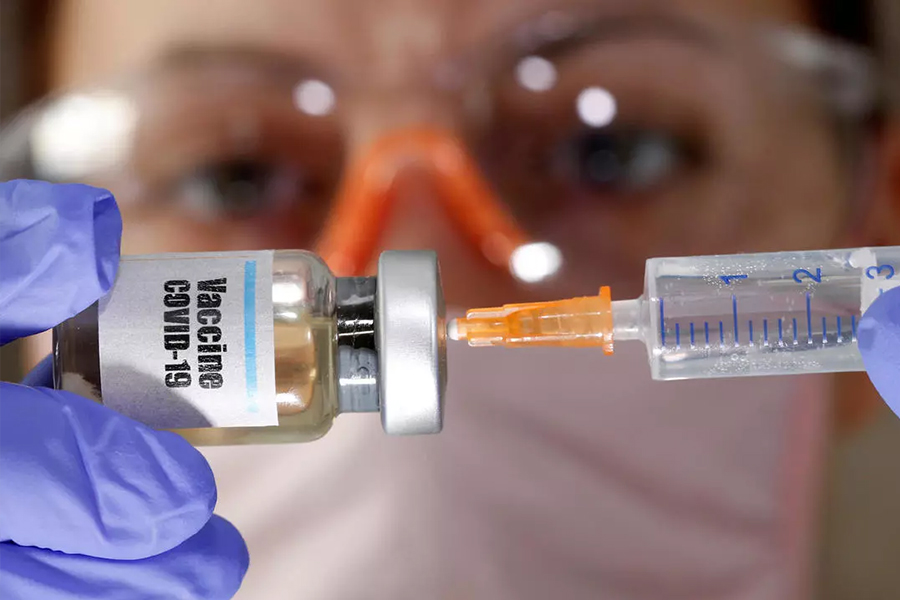

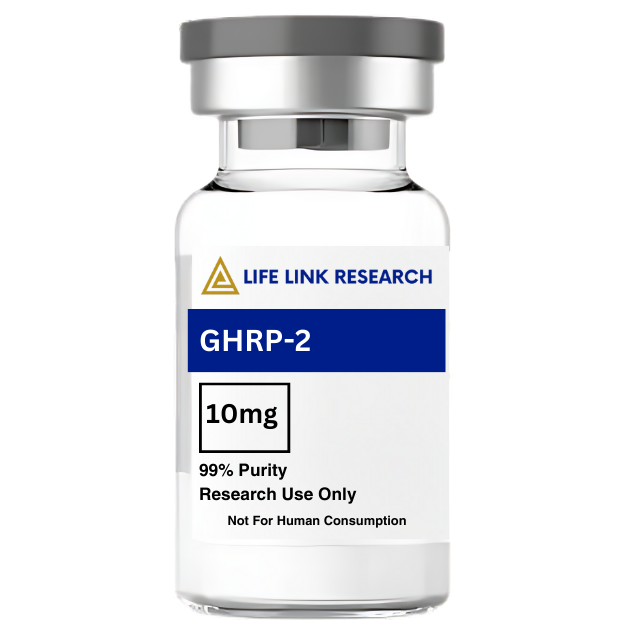
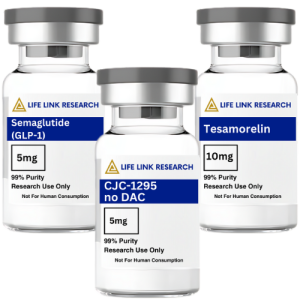
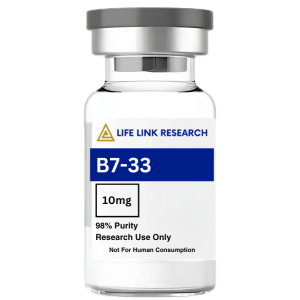
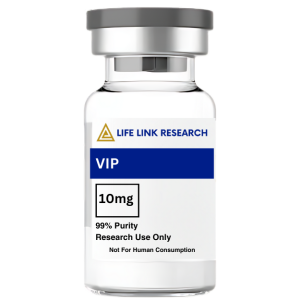
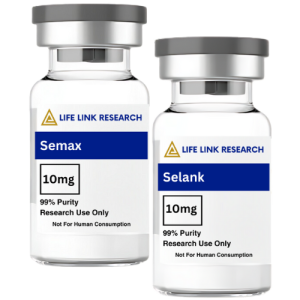
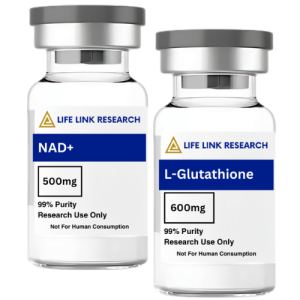
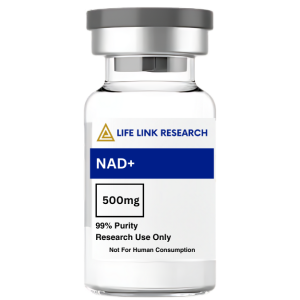


Reviews
There are no reviews yet.